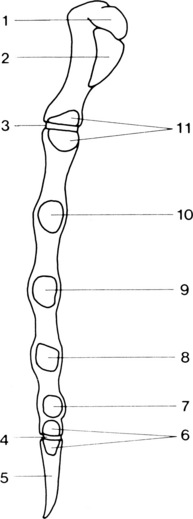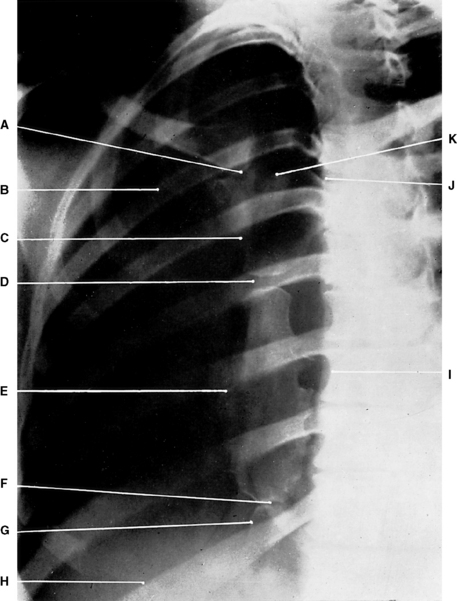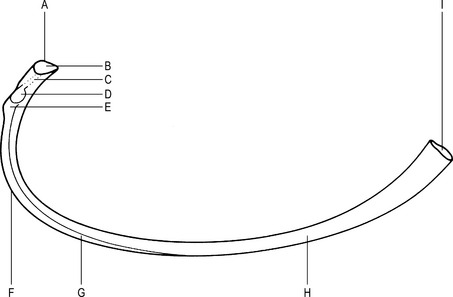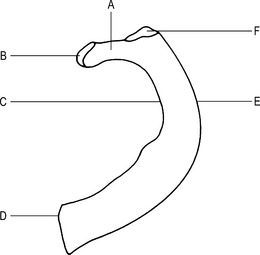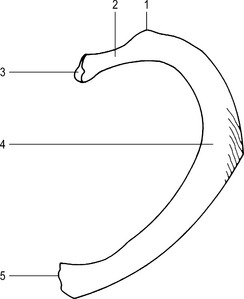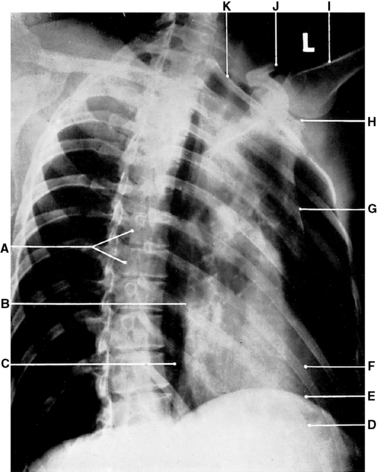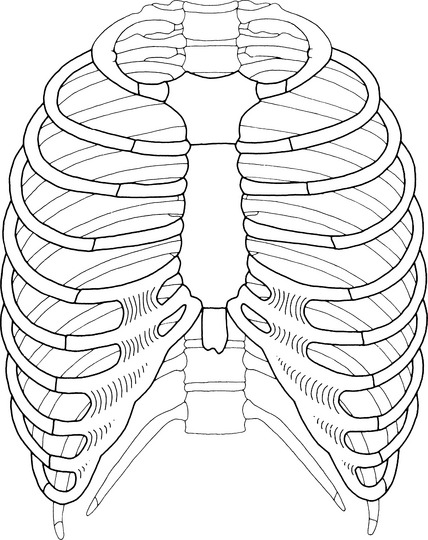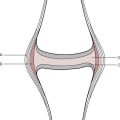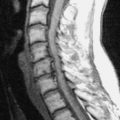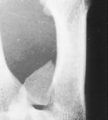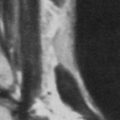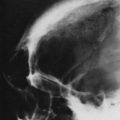8 Thorax
Sternum (Figs 8.1 and 8.2)
Type
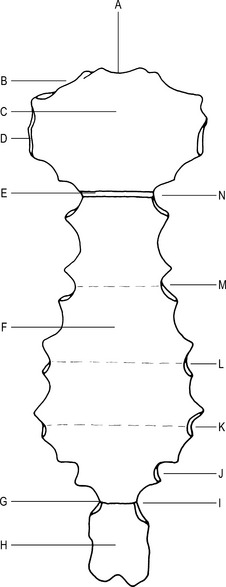
Fig. 8.1 Sternum (anterior aspect).
A–Jugular notch (suprasternal notch)
D–Facet for 1st costal cartilage
I–Facet for 7th costal cartilage
J–Facet for 6th costal cartilage
K–Facet for 5th costal cartilage
L–Facet for 4th costal cartilage
Articulations
The clavicular notch with the sternal end of the clavicle to form the sternoclavicular joint.
Main parts
Manubrium sterni
Facet for the 1st costal cartilage, at the upper end of the lateral border.
Demi-facet for the 2nd costal cartilage, at the lower end of the lateral border.
Radiographic appearances of the sternum (Figs 8.3 and 8.4)
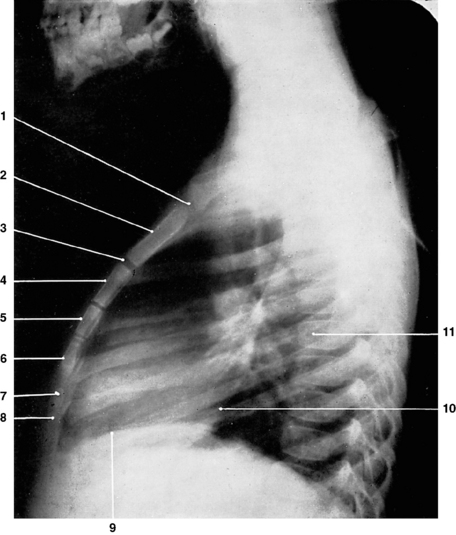
Fig. 8.4 Sternum: lateral projection of a child.
3 – Sternal angle Segments of the body of the sternum:
(From Bryan 1996.)
RIBS (Fig. 8.5)
1–7 are true ribs as they are directly attached to the sternum by the costal cartilage.
3rd–9th ribs are considered to be ‘typical’.
The ribs increase in size from 1–7 and then decrease in size.
Atypical ribs
12th rib
Radiographic appearances of the ribs (Figs 8.8, 8.9 and 8.10, Plate 5)
Costal cartilages (Fig. 8.11)
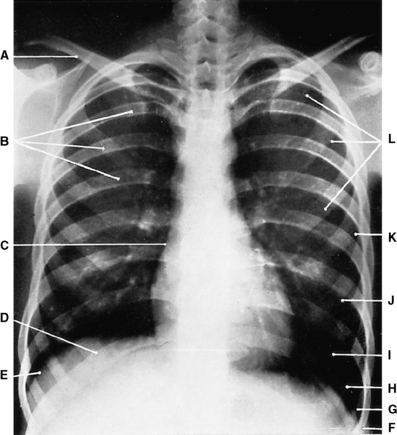
Fig. 8.8 Upper ribs: posterior projection.
B–Posterior borders of 4th, 5th and 6th ribs
L–Anterior borders of 1st, 2nd and 3rd ribs.
(From Bryan 1996.)
Base is attached to the anterior end of the ribs.
1st–7th ribs articulate with the sternum
8th–10th ribs articulate with the costal cartilage of the rib above
11th and 12th ribs end in the muscles of the abdominal wall.
increase in length from the 1st to the 7th
decrease in length from the 8th to the 12th

